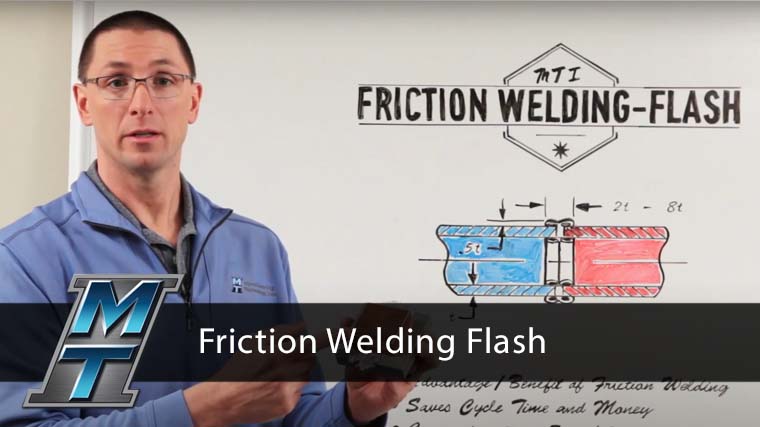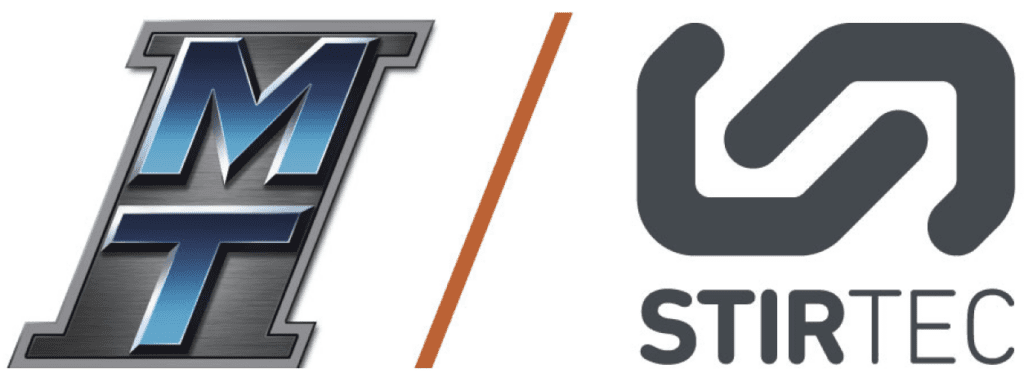
During the friction welding process, the combination of heat and force applied between two parts produces more than just a solid-state weld. One of the most notable results of the process is the formation of flash.
As two parts are heated and the material at the weld interface softens, the excess material starts to extrude away from the weld interface. That extruded material is called flash. Flash formation varies from part to part due to shape, type of friction welding process, and the material used. Here are a few common variations:
- Linear friction weld: Copper & Aluminum – The thermal conductivity properties of copper do not allow for displacement to occur. However, there will be material displacement from the aluminum — resulting in flash formation.
- Linear friction weld: Odd shape part geometry – When welding with oddly shaped parts, the result will be oddly shaped flash.
- Rotary friction welding: Flash planning in part design – It is possible to calculate what the flash will look like before the weld is made. For example, the flash formation on the inside and outside diameter of a tube is volumetrically equal. Knowing this information provides the ability to accommodate the flash into the weld design.
Flash formation also provides a unique benefit through self-cleaning at the weld interface. When flash formation takes place, any contaminants, such as coolant or grease, present on the weld interface between the two parts will be expelled during the welding process. Essentially creating a self-cleaning weld.
Although flash is an expected result of the friction welding process, it isn’t necessarily an unwanted one. Some parts, such as an automobile airbag indicator, retain the flash after the weld. This flash is integral to the assembly — it’s not going to flake off or come apart in operation.
However, if the flash is going to be a stress riser for the part, or your application dictates that the flash needs to be removed, it can be done inside the machine or as a post-welding operation. Some of the techniques used to remove the flash are sheering, turning and milling.
MTI Can Solve Your Problems
Our expert engineers have a deep understanding of the friction welding processes and the wide variety of materials that can be used. With our knowledge and machinery, we know how to achieve the maximum utilization of each material to ensure you get the highest quality parts that are perfectly catered to your applications. We’ll build a machine that makes your part, we’ll make the part for you, or we’ll help you make the part even better.
To learn more about friction welding, explore our website or watch how friction welding can be put to work for you.

